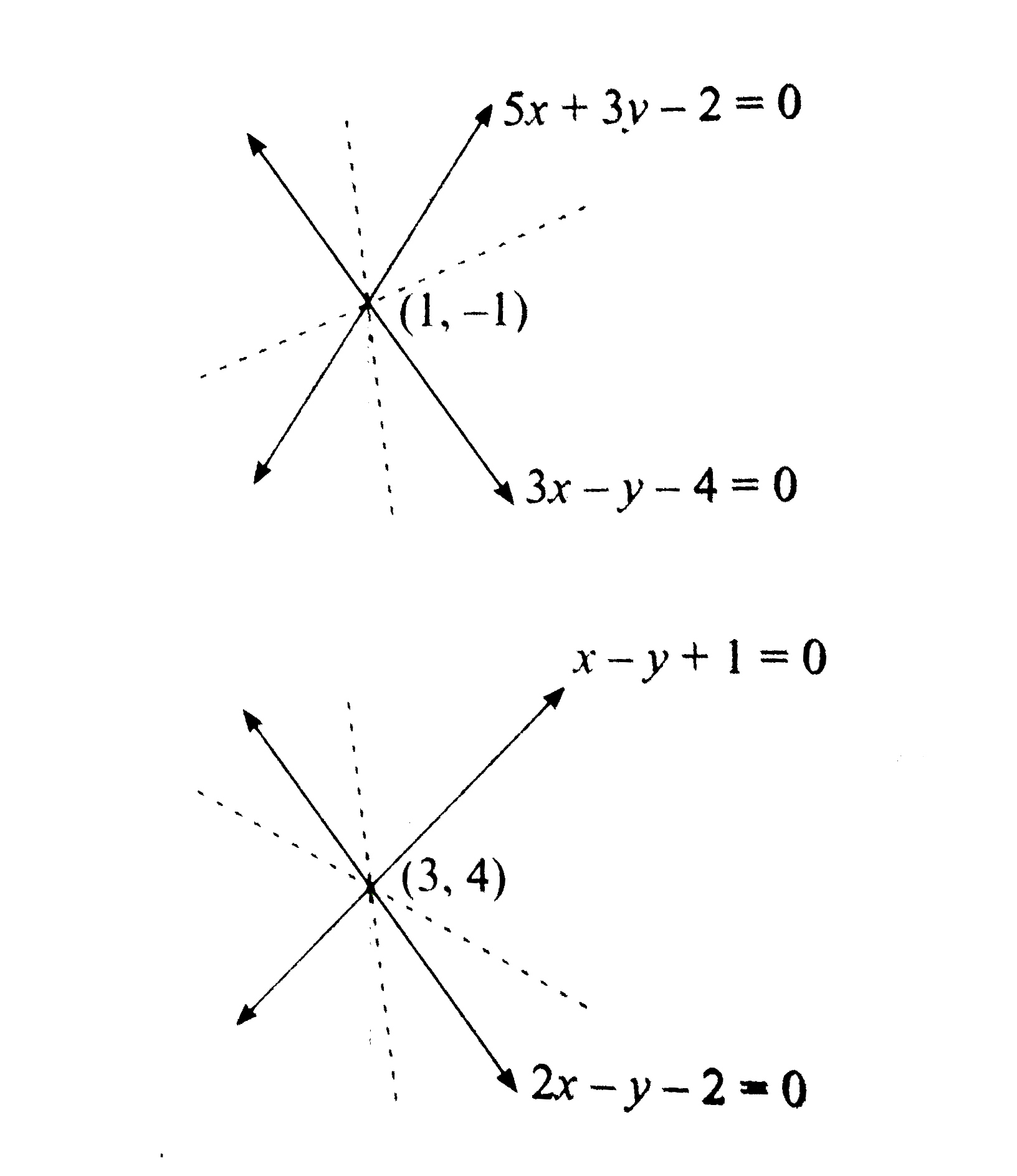Consider the family of lines 5x+3y−2+λ1(3x−y−4)=0 and x−y+1+λ2(2x−y−2)=0. Find the equation of a straight line that belongs to both the families.Solution in Tamil
Lines5x+3y−2+λ1(3x−y−4)=0 are concurrent at(1,−1) and linesx−y+1+λ2(2x−y−2)=0 are concurrent at (3,4).
Thus, the equation of line common to both familes is
y−4=−1−41−3(x−3)
i.e., 5x-2y-7=0

Topper's Solved these Questions
- STRAIGHT LINESBOOK - CENGAGECHAPTER - STRAIGHT LINESEXERCISE - Exercise (Single)
82 Videos
- STRAIGHT LINESBOOK - CENGAGECHAPTER - STRAIGHT LINESEXERCISE - Exercise (Multiple)
30 Videos
- STRAIGHT LINESBOOK - CENGAGECHAPTER - STRAIGHT LINESEXERCISE - Exercise 2.5
8 Videos
- STRAIGHT LINEBOOK - CENGAGECHAPTER - STRAIGHT LINEEXERCISE - Multiple Correct Answers Type
8 Videos
- THEORY OF EQUATIONSBOOK - CENGAGECHAPTER - THEORY OF EQUATIONSEXERCISE - JEE Advanced Previous Year
9 Videos
Similar Questions
Find the equations of the diagonals of the square formed by the lines x=o,y=0,x=1andy=1.
View SolutionIf P is a point (x,y) on the line y=−3x such that P and the point (3, 4) are on the opposite sides of the line 3x−4y=8, then x>815 (b) x>85 y<−85 (d) y<−815
View SolutionFind the equation of the bisector of the obtuse angle between the lines 3x−4y+7=0 and 12x+5y−2=0.
View SolutionThe point P(α,α+1) will lie inside the triangle whose vertices are A(0,3),B(−2,0) and C(6,1) if
View SolutionQ. Let p and q real number such that p≠0,p2≠q and p2≠−q. if α and β are non-zero complex number satisfying α+β=−p and α3+β3=q, then a quadratic equation having αβ and βα as its roots is
View SolutionConsider a family of straight lines (x+y)+λ(2x−y+1)=0 . Find the equation of the straight line belonging to this family that is farthest from (1,−3).
View SolutionConsider a family of straight lines (x+y)+λ(2x−y+1)=0 . Find the equation of straight line belonging to this family that is farthest from (1;-3)
View SolutionConsider the family of lines 5x+3y−2+λ1(3x−y−4)=0 and x−y+1+λ2(2x−y−2)=0. Find the equation of a straight line that belongs to both the families.
View SolutionConsider the family of lines 5x+3y−2+λ(3x−y−4)=0 and x−y+1+μ(2x−y−2)=0 Equation of straight line that belong to both families is ax+by−7=0 then a+b is
View SolutionConsider the family of line (x+y−1)+λ(2x+3y−5)=0 and (3x+2y−4)+μ(x+2y−6)=0 Equation of a straight line that belongs to both the families is:
View SolutionConsider the family of lines 5x+3y−2+λ(3x−y−4)=0andx−y+1+μ(2x−y−2)=0. The equation of a straight line that belonges to both the families is
View SolutionConsider a family of straight lines (x+y)+λ(2x−y+1)=0 . Find the equation of the straight line belonging to this family that is farthest from (1,−3).
View SolutionConsider a family of straight lines (x+y)+λ(2x−y+1)=0 . Find the equation of the straight line belonging to this family that is farthest from (1,−3).
View SolutionConsider the family of lines 5x+3y−2+λ1(3x−y−4)=0 and x−y+1+λ2(2x−y−2)=0. Find the equation of a straight line that belongs to both the families.
View SolutionConsider the family of lines 5x+3y−2+λ1(3x−y−4)=0andx−y+1+λ2(2x−y−2)=0. Equation of a straight line that belong to both families is
View Solution
